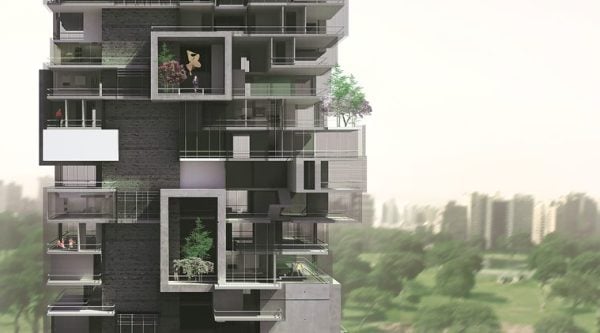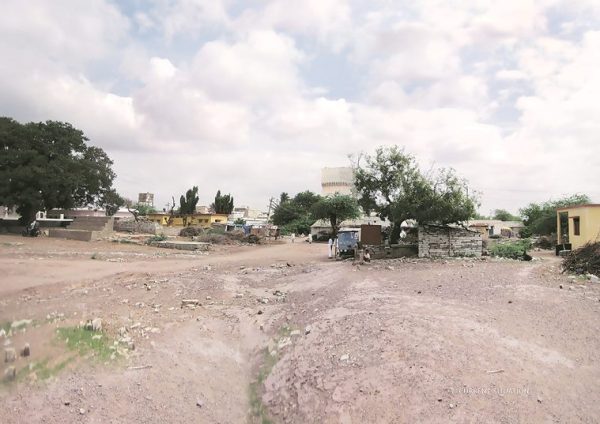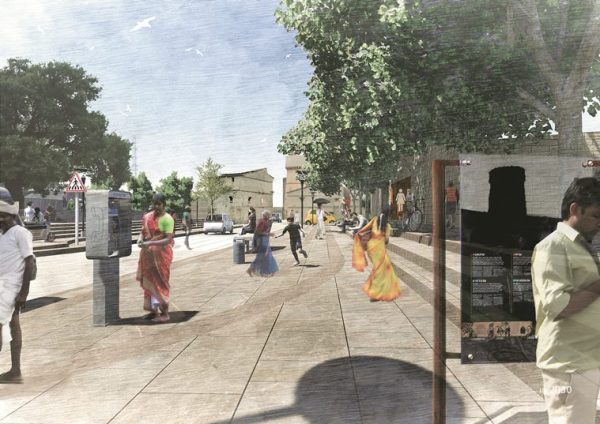
If the houses we inhabit today blur the divide between the public and the private, what will tomorrow’s homes look like? Three design studios look into the future and tell us how we may live.
In 1936, American architect Frank Lloyd Wright was commissioned to build a family home in Mill Run, Pennsylvania in the Bear Run Nature Reserve. A waterfall was the family retreat for nearly 15 years. The idea was to design the house across from the waterfall, so that they had a point to view. Instead, Wright brought the waterfall inside, placing it right at the top — the house was christened the Fallingwater house. The project prepared the architectural world for possibilities in stone and steel.
Closer to the present: For the 15th Architectural Biennial in Venice in May 2016, the UK pavilion has chosen “Home Economics” as a theme around which designers and architects will build a series of domestic spaces, questioning the status quo and the purpose of homes.
The spaces we inhabit are changing. So what does it mean to negotiate boundaries? Is a house merely a set of blocks, like a Lego set? How do we extend ownership over where we live? We ask three architectural firms in India to show us what they believe can be homes of the near future.
Brick Green: Anagram Architects, Delhi
Cities today have become a matrix of boundaries. Ownership is asserted by appropriating a building edge-to-edge, which also leads to insular and introverted lifestyles. This extreme action of maintaining privacy and control throws traditional ideas of community living and shared resources under the bus. Can the solution lie in exploring the spaces between edges and borders? What if we inflate the interstitial spaces and blur the edges?
These renderings of an independent stack of residences address the deficiencies of detachment from nature and disconnect from community. The structural shell of the house zigzags between two green walls, irrigated by harvested rainwater. Glass blurs the boundaries. The vegetal walls can become a community resource, with seasonal plants and herb kitchens. Such a space will help engage residents to not only meet and greet each other, but also serves to take away the bulk of concrete walls on either side.
– See more at: http://indianexpress.com/article/lifestyle/life-style/2020-a-space-odyssey/#sthash.zPiPl3R9.dpuf


A before-after rendering of a street in Konchur by Architecture BRIO, with lime-stone pavements and street furniture High Street: Architecture BRIO, Mumbai A collaboration between Architecture BRIO and NGO BillionBricks from Singapore hope to make Konchur in north Karnataka a sustainable model village. The scarcity of jobs and the lack of basic infrastructure in Konchur is driving the youth away from their homes. Can architecture build a bridge? The village epitomises the paradox of India’s cities: it boasts of telephone towers and hotels mushrooming amid beautiful traditional houses that have no toilets. Known for their limestone quarries, the houses in the village are built with stone, which allows them to stay cool in the summers and yet, provide warmth in the winters. Since the past four months, the architects have been working with the villagers to engage the community and build toilets. Further on the agenda, is the investment in well-designed public spaces and services to effect a change amongst the youth. “Often, in cities, architects only look within the boundary line. But especially in villages, the boundary itself is important. By rejuvenating the public realm, one hopes that the youth will take ownership of the village, develop entrepreneurial businesses and enhance the incremental opportunities within,” says architect Robert Verrijit, Architecture BRIO. A network of sewage systems, integrating technology to manage waste water, rainwater harvesting and solar powered public facilities in Konchur could well be the answer. – See more at: http://indianexpress.com/article/lifestyle/life-style/2020-a-space-odyssey/#sthash.zPiPl3R9.dpuf

Building Blocks: ShroffLeon, Mumbai The future of homes is flexible, adapting to all climatic conditions and typologies, sizes and proportions. From stand-alone homes to high-rise apartments, pre-fabricated modular houses can be based on a system of components — pretty much like a Lego set. It will mean a highly sophisticated technology of concrete or composite structures, with complex joinery that will make this possible. Different parts can be locked and customised to individual usage. In a sense, one can then go shopping for one’s house, and the fabricators will come over and assemble the fittings. It will make home-owners more participative in the process, apart from leading to higher innovations in component parts such as a wall or a stairwell. – See more at: http://indianexpress.com/article/lifestyle/life-style/2020-a-space-odyssey/#sthash.zPiPl3R9.dpuf
[Source:-.The.Indian.Express]
